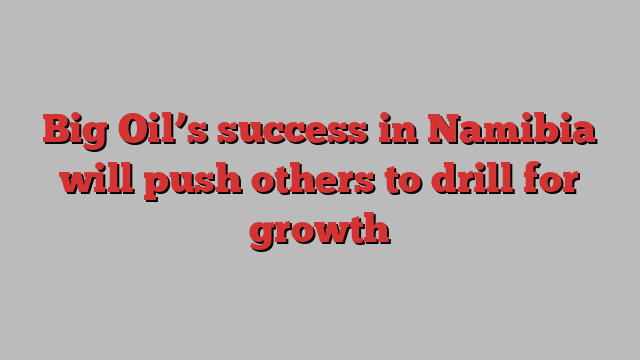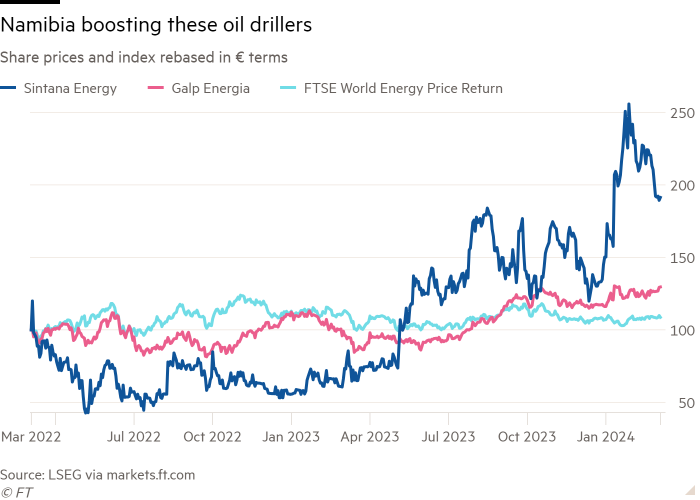
Unlock the Editor’s Digest for free
Roula Khalaf, Editor of the FT, selects her favourite stories in this weekly newsletter.
Those arguing that higher oil prices are ahead often point in evidence to a chronic lack of investment in oil exploration of late. Without sufficient capital put into large, offshore projects, crude supply will wither, they say. In fact, there have been very large oil discoveries including in the Norwegian North Sea, offshore Guyana (11bn barrels of oil) and, most recently, offshore Namibia.
Shell, TotalEnergies and Portugal’s Galp have made a series of discoveries of oil (and some gas) off the coast of the south-west African country in the past two years. Together these could produce hundreds of millions, if not billions, of barrels of oil.
If anything, a surprisingly high success rate could spur more activity. Of 17 pure exploration wells since February 2022, there have been 15 confirmed discoveries of commercial quantities of oil or gas.
Certainly Chevron has confidence in this outcome. In October 2022 America’s second-largest oil company announced that it had acquired 80 per cent of an offshore licence from the Namibian affiliate of Toronto-listed explorer Sintana. Junior explorer Sintana was an early buyer of licences to drill off the Namibian coast.

Chevron’s acquired acreage is just west of Galp’s. The American oil company has announced it will drill 10 wells starting in the fourth quarter of this year. Investors in Sintana, with a C$122mn market value, have done well. Its share price has more than tripled over the past year.
Of course, the law of averages could soon catch up with these explorers. The typical success rate for a series of offshore wells such as these is around a third. Such a high hit rate (88 per cent so far) might mean that this Orange basin in Namibia could be highly prolific. But history suggests this kind of success rate will tail off in the next couple of years.
These wells cannot be cheap. Some are being drilled in 5,000 metres of water, before going even deeper through the seafloor. Galp had budgeted $200mn-$300mn for its first two successful wells back in October. Even if those costs come down over time, a few “dry” wells could cause some of these oil companies to rethink their plans.
It is too early to tell whether the Namibian offshore oil play will turn into another large source of oil. But early indications suggest large finds in the hundreds of millions of barrels of recoverable oil, at least. Inevitably, the successes of Total, Shell and Galp will encourage large oil companies to direct more investment into exploration.
That impetus, as well as the potential added supply if significant, could help keep a lid on oil prices in the years to come.
Lex is the FT’s flagship daily investment column. Sign up for our popular newsletter for premium subscribers here

